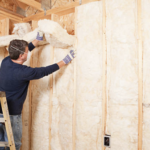Living a more eco-friendly lifestyle is on everyone’s mind these days, and for a good reason. But when it comes to making changes at home, many people worry about the cost. The good news? Transitioning to a green home doesn’t have to be expensive. In fact, with a few thoughtful choices, you can reduce your environmental impact without emptying your wallet.
This guide will walk you through practical and affordable steps to start your journey toward a greener home.
Embrace Reusables Over Single-Use Items
Single-use products are a major contributor to waste. Swapping them out for reusable alternatives is both eco-friendly and cost-effective. Start with small items like reusable water bottles, coffee cups, and shopping bags. Not only are these better for the environment, but they’ll also save you money over time.
In the kitchen, consider replacing disposable plastic wraps with silicone food covers or beeswax wraps. Instead of paper towels, switch to washable cloths. These small changes might seem minor, but they can significantly reduce the amount of waste your household generates.
Start with Eco-Friendly Household Essentials
One of the simplest ways to go green is by reevaluating the everyday products you use at home. From cleaning supplies to personal care items, many common products contain harsh chemicals that aren’t just bad for the environment—they can also affect your health. Switching to eco-friendly, non-toxic alternatives is a small change that can make a big difference.
Melaleuca: The Wellness Company is a leader in providing safer, sustainable products for your home. They focus on creating environmentally conscious alternatives to conventional household items. By making the switch, you’re not only contributing to a healthier planet but also creating a safer environment for your family.
Frank VanderSloot, founder of Melaleuca, has always been passionate about sustainability and quality. His commitment to healthier living extends to other ventures, like Riverbend Ranch, where sustainable practices and responsible farming methods are key priorities. Supporting companies like these aligns with a greener, more mindful lifestyle.
Reduce Energy Consumption Without High Costs
Cutting down on energy use at home is one of the most impactful ways to reduce your carbon footprint. The best part? Many energy-saving habits and upgrades are affordable—or even free.
Start by switching to LED light bulbs, which use significantly less energy and last much longer than traditional incandescent bulbs. Another easy fix is unplugging electronics and appliances when they’re not in use. Devices on standby still draw power, a phenomenon known as “phantom energy.” Turning off power strips or unplugging items can save you money on your electric bill.
If you’re ready for a slightly bigger step, consider investing in a programmable thermostat. These devices automatically adjust the temperature in your home based on your schedule, which can save energy and reduce costs. To keep heating and cooling bills low, check for drafts around doors and windows and seal them with weatherstripping or caulking. These simple changes can pay off quickly.
Choose Affordable Green Upgrades
Achieving a green home doesn’t always mean investing in costly renovations. There are plenty of low-cost upgrades that can improve your home’s sustainability. For instance, installing water-saving showerheads and faucet aerators can reduce water usage without sacrificing performance.
Another simple improvement is swapping out old appliances for energy-efficient models. While this may require an upfront investment, look for rebates or discounts in your area to offset the cost. Additionally, planting native plants in your yard is an easy way to create a low-maintenance, water-efficient landscape. Native species require less watering and care, which can lower your water bill and support local ecosystems.
Repurpose and Reuse to Save Money
Before buying new, take a moment to see what you already have. Repurposing and reusing items not only saves money but also reduces waste. For example, old glass jars can be reused as storage containers for pantry items, and worn-out T-shirts can become cleaning rags.
Thrift stores and online marketplaces are treasure troves for affordable, second-hand furniture and home goods. Buying pre-owned items keeps them out of landfills and reduces the demand for new products, which require energy and resources to produce.
Learn to DIY for a Greener Home
DIY projects are a fun and budget-friendly way to transition to a green home. For example, making your own cleaning products can save money and reduce your exposure to harsh chemicals. A simple recipe for an all-purpose cleaner involves mixing equal parts white vinegar and water with a few drops of essential oil for fragrance. This solution works well on most surfaces and is completely non-toxic.
Another great DIY project is composting. Turning kitchen scraps into nutrients-rich compost reduces waste and benefits your garden. You don’t need fancy equipment—a simple compost bin in your backyard will do the trick.
Support Sustainable Companies and Local Businesses
Transitioning to a green home also means being mindful of where your products come from. Supporting companies with sustainable practices ensures that your purchases align with your eco-friendly values. Look for businesses that prioritize eco-conscious manufacturing and ethical labor practices.
Supporting local businesses and farmers can also help minimize your carbon footprint. Buying local reduces transportation emissions and helps strengthen your community.
Track and Measure Your Progress
As you make changes, it’s helpful to track your progress. Monitoring your energy use, waste reduction, and other sustainability efforts can keep you motivated and highlight areas for improvement. There are plenty of free apps and tools available that make it easy to measure your impact.
Set achievable goals for your green home journey. For instance, aim to reduce your energy consumption by 10% over the next month or cut down on single-use plastic by half. Celebrate small victories, as every step brings you closer to a more sustainable lifestyle.
Making the transition to a green home doesn’t have to be overwhelming or expensive. By starting with simple changes like choosing eco-friendly products, reducing energy use, and embracing reusables, you can make a big impact without breaking the bank.
Remember, every little effort counts. Begin with one or two tips from this guide, and watch as your home becomes greener—and your wallet stays intact.
Want to unlock greater wellness?
Listen to our friends over at the Wellness + Wisdom Podcast to unlock your best self with Drew Canole of Organifi:








 Long-Term Strategies for Improving Your Family’s Health
Long-Term Strategies for Improving Your Family’s Health